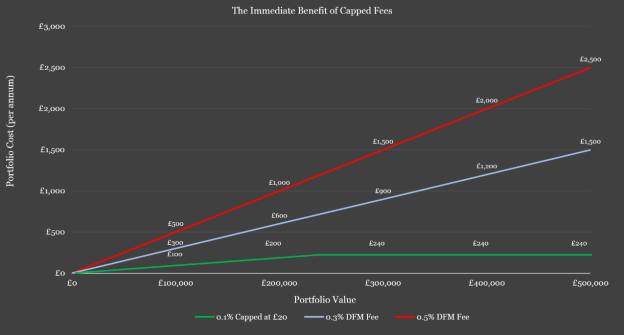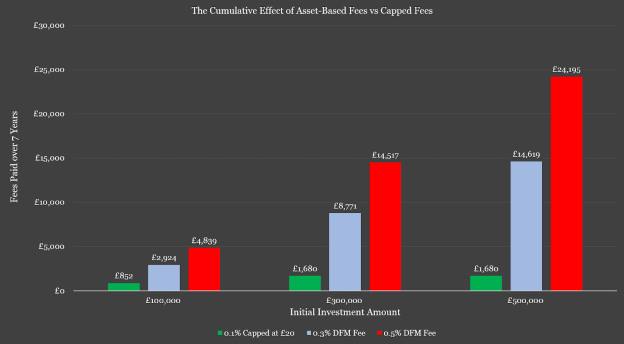

Increased scrutiny from regulators, from clients and from the media around value, transparency, and simplicity over recent years underlined the need for a disruptive approach.
One answer could lie in a low-cost, capped pricing model that treats all clients in the same way – no matter how much money they are investing.
After years of growing concern, costs across the entire UK investment industry were called into question in 2017 when the Financial Conduct Authority published its Asset Management Market Study.
The regulator concluded that price competition was weak in many areas of the retail market with firms enjoying high levels of profitability – average profit margins came in at 36 per cent for sampled organisations – to the ultimate detriment of their clients.
The focus on wealth management fees increased further last year with the publication of the latest edition of EY’s Global Wealth Management Research Report.
The work found that nearly half of discretionary wealth management clients were dissatisfied with fee levels.
This dissatisfaction, which was even more prevalent among younger clients, was found to stem from a lack of clarity around what fees are charged and how they are charged.
EY’s recommendation is clear: firms must recalibrate their pricing models and do a better job of communicating their value to clients.
A need for change
This growing discontent is unsurprising given the traditional wealth management pricing model.
As with many other areas of investment, costs rise as a percentage of overall portfolio size. Clients pay more as they get wealthier.
In a situation where the level of service increases in line with assets invested (where larger portfolios receive a more bespoke service managed by more senior investment professionals) this model can be justified to a degree.
But in a case where one client with a £10,000 portfolio and another with £100,000 receive precisely the same service, there is no justification for charging the latter ten times as much as the former.
From a financial adviser’s perspective, penalising wealthy clients in this way makes it all the more tricky when it comes to demonstrating overall value. The last thing an adviser wants to do is put people off saving.
A capped fee portfolio management proposition offers a simpler, transparent, and fair approach when it comes to charging wealth management clients. The immediate and positive impacts of a capped model are demonstrated clearly in the graph below.
Chart 1: shows the first year cost in 10bppa steps for different size portfolios.

It underlines the cost benefit of a capped fee proposition
Asset-based fees increase exponentially with wealth.
A £500,000 client portfolio with a 0.5 per cent portfolio management fee will accrue £2,500 in discretionary management charges in one year.
The same client will pay just £240 over the same period when fees are capped at £20-a-month.
The difference between the two charging structures is staggering, and this disconnect increases over time as the impact of fee drag bites.
As shown below, an investor with £500,000 over seven years in a portfolio charging an OCF of 0.5 per cent will pay some £24,195 in fees, while that same investor would be charged just £1,680 over the same period if fees were capped at £240 annually.
Chart 2: shows the cost in 10bppa steps for three different size portfolios over one, three and seven years.

It underlines the benefit of a capped fee proposition.
Initial research carried out by financial services consultancy the Lang Cat suggests that investors are already sold on the benefits of a fixed or capped fee model for their portfolio.
Over 80 per cent of those surveyed voiced support for the concept, with the most frequently chosen price point for fees coming in at between £20- and £30-a-month.
Time for a new approach
Clear demand exists for an innovative approach to portfolio charges in a world where a flawed model has dominated for so long.
A flat world – where the playing field across fees is levelled – should be embraced, not feared.
If we truly feel our investment solutions are sound, then none of us should have anything to hide.
In a time where value is being questioned across the whole investment sector, there’s still a woefully low number looking to reduce or cap fees.
It is an approach that has the potential to disrupt the status quo by appealing to advisers and investors of all types.
Mark Northway is Investment Manager at Sparrows Capital



